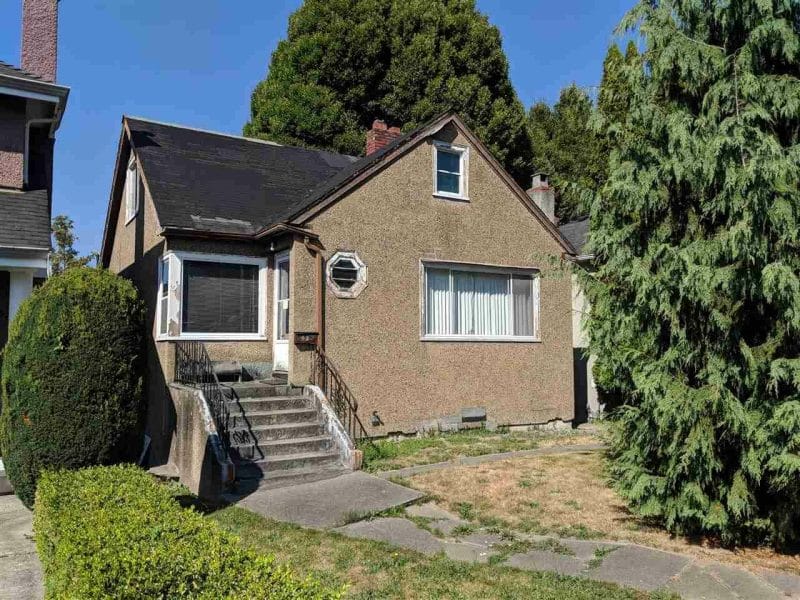(The image above will make sense eventually, stay with me here…)
Over the last few years, I haven’t written a whole lot about the mining space. Partly that’s because it’s pointy head stuff that can be hard to interpret for the layman, partly it’s because the most exciting sectors within mining (battery metals, as an example) have been in the doldrums market wise, and partly it’s because, frankly, the folks leading the greater markets through this extended bull run haven’t been the grey hairs – who are the usual go-to’s for mining investment – but the millennials, who have bought so much weed it hurts and, for the most part, don’t know what a dividend is because none have been given out in their lifetimes.
But I do have a sweet spot when it comes to mining, and it has served me well over the years. That sweet spot is the place where a company goes dark and the share price drops to nothing because they’ve started on-the-ground work.
Show me a company that raised a bunch of cash from in-the-know mining guys at $0.10, and more at $0.05, and is now available for a year low $0.035, and can show actual work being done, and I’ll take a flutter on the thing.
That’s the situation with Saville Resources (SRE.V), a tiny niobium exploration company out of Quebec.
And when I say tiny, I mean tiny. 58m shares out for a $2.03 million market cap.
You know what else costs $2m? Removing swallowed foreign objects from hospital patients in a Rhode Island hospital.
A Rhode Island Hospital report shows that 33 patients needed 305 medical interventions to remove foreign objects, including knives, razor blades, and batteries that were intentionally swallowed, resulting in more than $2 million in hospital costs.
You know what else you could get for $2 million?
Not this Vancouver teardown house, which is selling for $2.4m.
Mmm..value!
What would you prefer to sink your money into, a collection of ingested razor blades, or a home so foul they won’t show you pictures of the inside?
Or.. a niobium claim.
To make an informed decision, I guess first you need to know what niobium is.
Okay, got that?
Are we clear on what niobium is now?
Sigh.
At 9.2 kelvins, niobium takes on the properties of a superconductor, which means they can be used in MRI scanners, or rocket engine nozzles, or pipelines, or jet engines, or to cool quantum computers, which will be how the next iteration of the internet does it business. It can be added to glasses to make them thinner and harder.
The Large Hadron Collider in Switzerland, the one that will eventually create a black hole in Europe that will kill us all, uses 600 tons of niobium cabling to do its work.
For the most part, however, niobium is used to create nickel-, cobalt- and iron-based super-alloys, and micro-alloys that harden steel.
BLUE STEEL, right?!
Come on, that was golden. But I digress.
Tantalum, which is used in micro-capacitors, is pretty darn close to the chemical makeup of niobium, and usually comes as a nice side hustle on a niobium mine.
Both of those metals are on the recently updated list of US ‘critical elements’ which, according to the Department of the Interior, are critical to the economic and security needs of the country.
Under the Executive Order, these commodities qualify as “critical minerals” because each has been identified as a non-fuel mineral or mineral material that is essential to the economic and national security of the United States, that has a supply chain vulnerable to disruption, and that serves an essential function in the manufacturing of a product, the absence of which would have significant consequences for the economy or national security.
In other words, the US needs more of them, and needs production to be secured, if at all possible, in North America.
Dig deeper into niobium proper and we find:
The United States does not have a niobium or tantalum mining industry because resources are of low grade, and the United States must import all of its niobium and tantalum source materials for processing. Brazil and Canada are the major producers of niobium mineral concentrates.
Deeper: 89% of US niobium imports come from Brazil. Canada sends 10%.
There are 150,000 tons of estimated niobium in the ground under the US, but what has been found has been such low quality that it’s not feasible to get after it.
The situation in Canada, however, is different. We gots niobium for days, yo.
Here’s Saville Resources, talking about the Niobium-Claim Group Property they’re working to earn-in from Commerce Resources Corp, hoping to earn up to a 75% interest by getting boots on the ground.
The drilling at the Star Trench Area, completed in 2008 and 2010 by Commerce Resources Corp, has returned some of the strongest tantalum drill intercepts to date on the Property, including 454 ppm Ta2O5 over 7.8 m and 632 ppm Ta2O5 over 3.8 m in drill hole EC08-025.
These drill intercepts, also associated with moderate niobium and strong phosphate mineralization, were returned from relatively shallow depths (<50 m core length) with only limited follow-up drilling completed.
This follow-up drilling, completed in 2010, consisted of three (3) drill holes totaling 494 m and returned some of the highest-grade individual core samples collected to date on the Property, including 1.69% Nb2O5, 2,220 ppm Ta2O5, and 20.5% P2O5 over 0.3 m (sample 84321).
That’s fair, but they sent out a geologist to do an NI 43-101 technical report, to gauge whether the whole thing is worth pursuing further.
Turns out, the geologist thinks there is. And that it won’t cost a lot to progress:
Phase 1
1 Geological mapping and trenching $ 100,000
2 Detailed sampling & petrography $ 50,000
3 Channel sampling $ 50,000
4 Geophysical surveys (type TBD) $ 70,000
5 Contingency $ 40,500
Total $ 310,500
That’s a good thing because, did I mention that Saville Resources is valued at a market cap less than a Vancouver teardown? I did, right?
Others can dig deeper into the scientific specifics of Saville’s project, because really, that’s not what I see as the value proposition here. When I buy a mining stock, I look for three things:
- Is the sector hot, or is a supply crunch coming? – I think the answer here is, yes
- Is the stock undervalued – like valued so low that any sneezed our news release is likely to kick it up a few cents? At $0.035 a share, the answer here is again yes
- Is something happening to show that the execs running the show don’t intend to just sit on it and wait for someone to want it more than they do?
On that last one, we’ve got a few indicators that work is afoot.
First, the company says there is.
Saville Resources Inc. has mobilized field crews to carry out the company’s inaugural exploration at its niobium claim group property. The property is situated within the central Labrador Trough, approximately 130 kilometres south of Kuujjuaq, Que., and covers several prospective niobium-tantalum targets, including the Northwest, Miranna, Southeast and Star trench areas.
The primary objective of the field program is to further delineate drill hole locations ahead of drilling. The work is being completed by Dahrouge Geological Consulting Ltd. and will comprise two primary components: a ground magnetic survey and targeted prospecting.
For the uninitiated, ground magnetic surveys involve sending guys in heavy boots out to literally carry a magnetic camera back and forth across the property to see if they can detect anything up to about 15m beneath the ground. Think of it as a big ass metal detector on a stretcher.
Targeted prospecting means going in on spots that show signs of something interesting with a pickaxe.
If all of that sounds a little old school to you, that’s because it is. Since we don’t have metal sniffing robots we can send out into the woods that’ll ferret out minerals in sinkholes (yet), we still rely on grizzed old farts in North Face fleeces who don’t mind swinging between a few crevices and chipping off an outcrop or two.
Second, in order to actually take control of this property in a meaningful way, Saville is contractually bound to do work on it.
Under the terms of the agreement, the company may obtain a 75-per-cent interest in the property by completing a total of $5-million in work expenditures over a five-year period. Commerce will receive a cash payment of $25,000 upon signing, and $225,000 upon closing, as well as retain a 1-per-cent or 2-per-cent net smelter royalty (NSR) on production, depending on the claim, with Saville having the option to buy back half the respective NSR for $1-million.
Lastly, here’s the SRE chart for the last year. Right now, the thing is progressing, but the stock chart has bottomed out.
I’m not going to tell you that Saville Resources is destined for greatness – I don’t know that. And I’m not going to tell you that they’re going to find great swathes of niobypants – because maybe they’ll miss. And I sure as hell won’t tell you to visit their website, which looks like it was built on Geocities in 1997.
Julie the designer is phoning it in, bois.
But the market cap is, I repeat, $2m, and there are only three companies doing most of the niobium production around the world right now, and they could sure use a new source, or a competitor.
Will it be Saville? Well, let’s just remember this: For you to double your money on a $0.035 share purchase, the stock has to hit $0.07.
To double your money on Canopy Growth (WEED.T), you need it to run from $44 to $88.
Time for the millennials to give resources a good long look.
— Chris Parry
FULL DISCLOSURE: Saville Resources is not an Equity.Guru marketing client, but the author went out and bought a bunch of stock because his spider senses are telling him something’s up.








